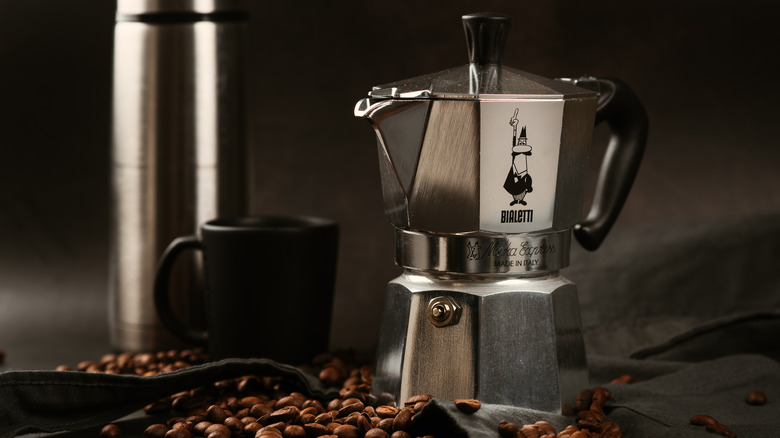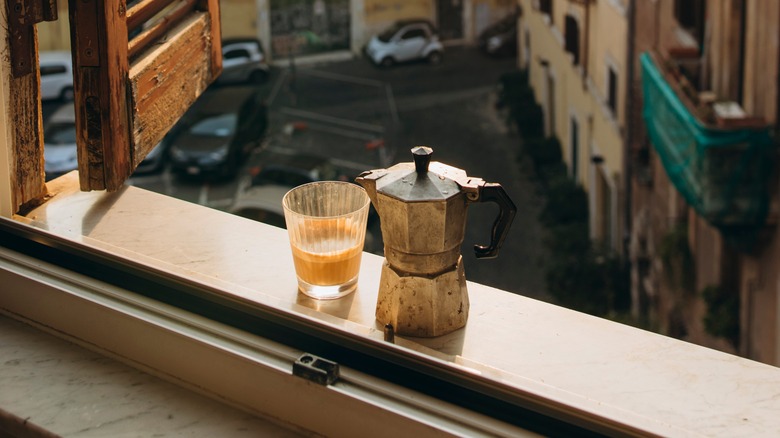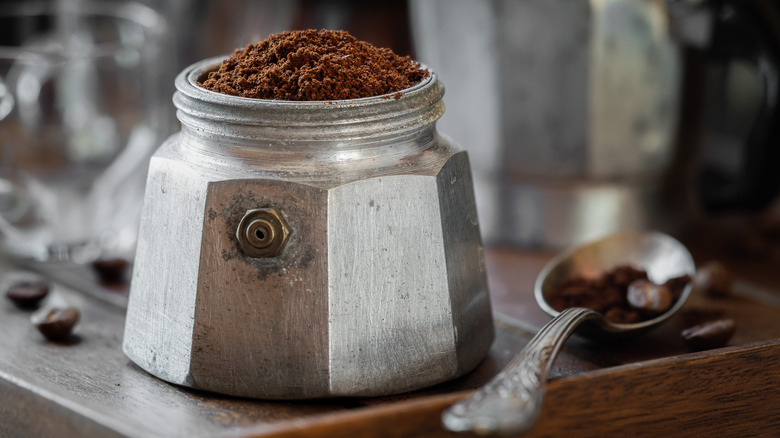What Is A Moka Coffee Pot, And How Does It Work?
If you've ever been to Italy, you've likely come across a charming little coffee pot with a unique shape and a nostalgic appearance. No, it's not some medieval form of a teapot; it's likely a Moka coffee pot.
Moka pots are classic Italian coffee makers synonymous with the high-quality, aromatic coffee Italy is known for. They're often overlooked in the West in favor of drip coffee makers or French presses, but Moka pots are the bedrock of Italian coffee culture, where they're used in homes, coffee shops, and small bars across the country.
Moka pots come in different sizes, shapes, and materials, but they all work using the same principle: pressurized steam. They're traditionally heated on a stovetop (though electric versions exist), with water in the bottom chamber and ground coffee in the filter basket, producing a rich and potent brew that stands out for its intense fragrance and taste.
Basically, Moka pots extract the rich essence of the coffee bean for an unparalleled robust taste that's great for when you're craving an espresso-like hit of caffeine. But where did the Moka pot originate from? How does it work? And what are some of the best ways to brew your own authentic Italian coffee with a Moka pot? This fascinating invention that's been a part of Italian coffee culture for generations is worth a deep dive.
How Moka pots brewed their way into coffee history
Alfonso Bialetti invented the Moka Express coffee pot in Italy in the early 1930s while working out of his aluminum studio in the small town of Crusinallo in the region of Piedmont in northern Italy.
Inspired by watching women do their laundry, Bialetti adapted the design of the lisciveuse, a boiler-based washing machine of the time, to craft a central steel tube to evenly distribute boiling water to make coffee.
The octagonal pot was named after the city of Mokha in Yemen, where coffee beans were first commercially traded in the 16th century. And it was an instant hit. The uniquely designed coffee pots became incredibly popular and iconic in Italy thanks to Bialetti's clever marketing tactics. The little man with a mustache, elegantly dressed in a jacket and tie and painted on every pot, quickly became the symbol of the Bialetti company.
By the 1950s, the Moka pot had become a symbol of Italian Art Deco design and culture, and by the 1970s, coinciding with the explosion of espresso on foreign markets, Bialetti's pot was exported worldwide, becoming a beloved symbol of Italian lifestyle and taste.
Today, the Moka pot remains an entrenched part of Italian coffee culture. Despite the fact that several versions and brands of Moka pots exist today, the original appliances remain a sought-after item for coffee enthusiasts and collectors alike, creating a place in both Italian and coffee history for Bialetti and his unique invention.
Mastering the art of brewing with a Moka pot
Before diving into some Moka pot brew tips, it's worth clearing up a common misconception: Coffee brewed in a Moka pot, while strong, is not espresso. To meet Istituto Nazionale Espresso Italiano (ISNEI) espresso standards, the coffee must endure at least nine bars of pressure — a feat you'll find that standard Moka pots cannot achieve.
However, that doesn't mean you can't make great coffee with a Moka pot. Choosing the right beans is key, though. You want to select a bean with character to complement the Moka pot's brewing strength, such as a brew boasting a delightful dash of sweetness or spice. Homegrounds recommends choosing rich, medium-roasted espresso beans.
Grind those beans up medium-fine, which will look similar to table salt. Set them aside as you fill the bottom chamber of the Moka pot up with cold water (don't fill it past the valve). Then, tightly pack the filter basket with your coffee grounds. Place the top chamber on the pot and heat it over medium heat until you hear that sweet signature gurgle. Take it off the heat and savor each sip of your rich, bold coffee.
Getting bit by a bitter taste? That can happen with a Moka pot. To balance out the bitter, try using a coarser grind or brewing the coffee on lower heat to avoid over-extraction of the acidic flavors in the beans. Or, cut the taste the Italian way with sparkling mineral water.


